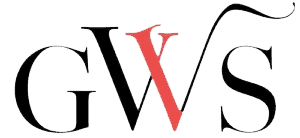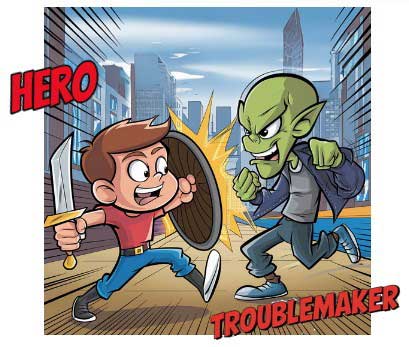SPOKEN 1.3
The What
Grades 1-3

We tell stories all the time. In fact, several thousand years ago, it was the main way people shared information. But we’re going to learn to tell a story for a different reason.
Many people think that each type of writing – an essay, a letter to Santa, a story – has a different structure. However, we have known for 2300 years that the structure is all the same.
And creating stories is the easiest way to learn it.
Trout Shout
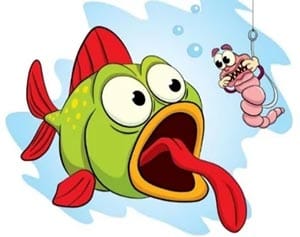
What = Cold + Gold
Task 1.3.1 – Tandem
Using lined paper, draw one box like this. Make it as tall as you need, but only half the width of the page.
Write the word What in the middle.
| What |
Put another box about the same size below it.
| What | ||
Label them like the one below. Color each row when you are done.
| What | |||
|---|---|---|---|
| I | had a problem with | a troublemaker | |
You now have a What Statement.
The What Statement
The What Statement tells what the story is about.
The Main Parts of the What Statement
The Hero
The Troublemaker
They are separated by a phrase, had a problem with Or had a problem when
The Hero
It doesn’t matter if the hero is a 12-year-old boy named Zack or a 93-year-old woman named Miss Fletcher.
Nor does it matter if the troublemaker is a bully, an alien, a tornado, or an angry cat.
It’s all the same. You have a hero with a problem and a troublemaker that is causing it.
You will be the hero. So from now on we will say I instead of hero.
Do not be a superhero! That sort of story is very hard to create. Instead, be a girl or a boy about your age, with a young person’s interests and fears.
Task 1.3.1 – Individual
Draw a barbell on a piece of paper. Use something round, like the lid of a jar, to make each barbell end.
Put I in the left circle and troublemaker in the right. What we have is like the ends of a barbell. We can call this the “Communication Barbell.”
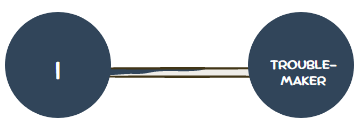
Now you’re holding up the What.
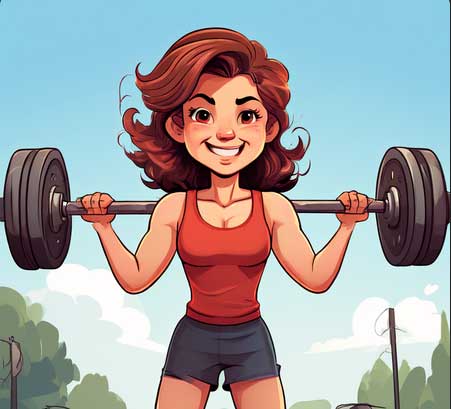
Trout Shout!
Go to the What Statement. Read the bottom row without stopping.
What you have is a sentence.

Say it again!
And again. LOUDER!
Play pattycake at least five times each. Each time, say the sentence.
Now say: I had a problem with a troublemaker.
Say it again!
And again. LOUDER!
Play pattycake at least five times each. Each time, say the sentence.
